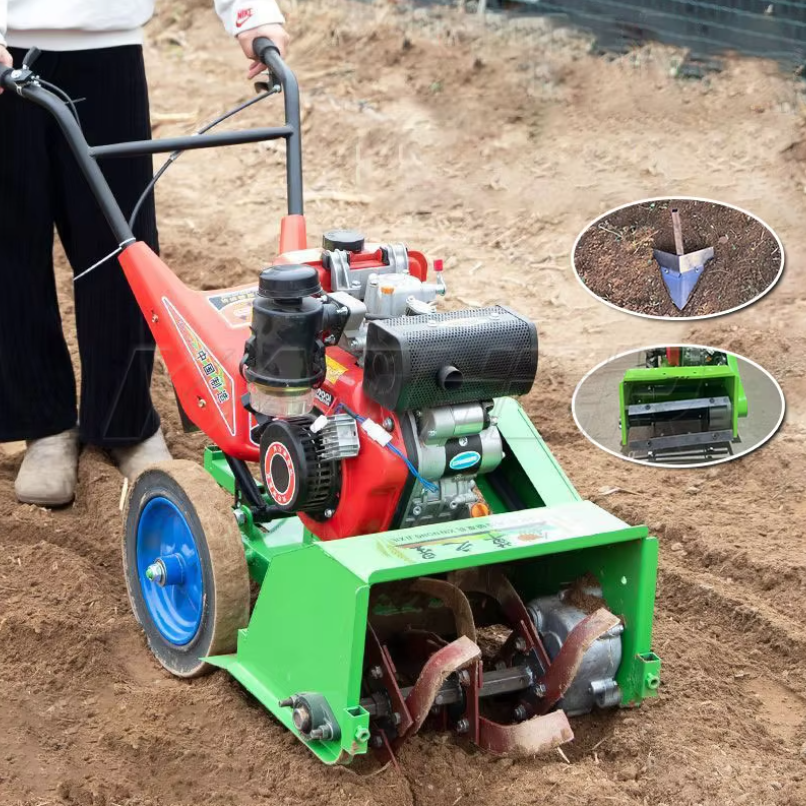Îmbunătățirea creșterii plantelor cu cultivatoare moderne
De-a lungul timpului, instrumentele de cultivat au rămas esențiale în gospodării și grădini, ajutând la pregătirea solului și la menținerea plantelor sănătoase. Odată cu apariția noilor tehnologii, observăm niște schimbări destul de interesante în designul cultivatoarelor, care schimbă regulile jocului atât pentru operațiunile agricole la scară largă, cât și pentru cultivatorii de pe proprietăți private. Modelele moderne funcționează acum mai eficient în a introduce aer în sol, distribuie mai uniform nutrienții și controlează buruienile – un lucru pe care orice grăдинar îl știe că face diferența atunci când încerci să cultivi recolte puternice și sănătoase.
Prin adoptarea metodelor moderne de cultivare, cultivatorii pot optimiza condițiile solului, reduce efortul manual și crește recolta. Înțelegerea acestor tehnici oferă o perspectivă valoroasă asupra practicilor durabile și eficiente de cultivare care promovează dezvoltarea sănătoasă a plantelor.
Tehnologii Avansate de Cultivare
Aerare Precisă a Solului
Cultivatoarele inovatoare utilizează brațe și lame reglabile pentru a îmbunătăți aerarea solului fără a cauza perturbări excesive. Această aerare precisă îmbunătățește infiltrația apei și respirația rădăcinilor, esențiale pentru plante sănătoase. Unele modele includ senzori care monitorizează umiditatea și textura solului, permițând operatorilor să personalizeze adâncimea și intensitatea cultivării.
Această tehnologie previne încălcirea solului și creează un mediu optim pentru germinarea semințelor și dezvoltarea rădăcinilor.
Sisteme Integrate de Control al Buruienilor
Cultivatoarele moderne combină adesea cultivarea mecanică cu strategii integrate de gestionare a buruienilor. Caracteristici precum distanța redusă între brațe și zonele de lucrare localizate se concentrează pe smulgerea buruienilor, minimizând perturbarea culturilor. Unele cultivatoare sunt echipate cu sisteme ghidate prin GPS pentru a viza anumite zone ale câmpului care necesită controlul buruienilor.
Această abordare selectivă reduce utilizarea de erbicide, susținând practicile agricole ecologice și promovând o creștere sustenabilă a plantelor.
Designuri versatile și adaptabile
Cele mai noi modele de cultivatoare sunt concepute pentru a fi versatile în diverse tipuri de sol și culturi. Setările ajustabile permit operatorilor să comute între o cultivare ușoară la suprafață și o amestecare mai profundă a solului, după necesitate. În plus, unele cultivatoare sunt echipate cu accesorii interschimbabile, extinzându-le funcționalitatea pentru sarcini precum pregătirea patului de semănat sau gestionarea resturilor vegetale.
Această adaptabilitate asigură faptul că cultivatoarele pot satisface în mod eficient nevoile diverse ale agriculturii moderne.

Beneficiile tehnicilor inovatoare de cultivare
Sănătatea și fertilitatea îmbunătățită ale solului
Prin îmbunătățirea structurii solului și promovarea activității microbieni, tehniciile inovatoare de cultivare contribuie la creșterea fertilității solului. O aerare mai bună și incorporarea materiei organice creează un mediu bogat în nutrienți care susține o creștere viguroasă a plantelor.
Utilizarea consecventă a cultivatoarelor avansate ajută la menținerea productivității pe termen lung a solului, esențială pentru o agricultură durabilă.
Creșterea cantității și calității recoltelor
Condițiile optime ale solului influențează direct sănătatea și productivitatea plantelor. Utilizarea cultivatoarelor care oferă o pregătire precisă a solului duce la sisteme radiculare mai puternice, o absorbție îmbunătățită a nutrienților și plante mai sănătoase. Acest lucru rezultă în recolte mai mari și de calitate superioară, satisfăcând mai eficient cerințele pieței.
Fermierii beneficiază de o profitabilitate mai mare și de costuri reduse ale intrărilor prin aceste metode îmbunătățite de cultivare.
Eficiență în utilizarea forței de muncă și a timpului
Cultivatoarele inovatoare simplifică sarcinile de pregătire a solului, reducând efortul fizic și timpul necesar. Caracteristici precum setările ajustabile și automatizarea permit operatorilor să acopere suprafețe mai mari mai rapid și cu o precizie mai mare.
Această eficiență permite cultivatorilor să aloce resursele mai eficient, îmbunătățind astfel gestionarea generală a fermei.
Implementarea Practicilor cu Cultivatoare Avansate
Alegerea Corectă a Cultivatorului în Funcție de Nevoi
Alegerea cultivatorului potrivit depinde de factori precum tipul de sol, varietatea culturii și dimensiunea câmpului. Înțelegerea cerințelor specifice ale operațiunilor agricole ajută la selectarea unui model cu caracteristici adecvate, cum ar fi configurația țepilor, adâncimea reglabilă și atașamentele compatibile.
Consultarea producătorilor sau a specialiștilor agricoli poate ghida alegerea celor mai bune opțiuni.
Pentru o durată îndelungată este necesară o întreținere corespunzătoare
Întreținerea regulată a cultivatoarelor este esențială pentru a asigura o performanță constantă și durabilitate. Curățarea, ungerea și înlocuirea la timp a pieselor uzate previn defecțiunile și mențin eficiența operațională.
Verificările periodice și respectarea instrucțiunilor producătorului prelungesc durata de viață a cultivatorului, protejând investiția dvs.
Instruirea și dezvoltarea competențelor
Operatorii ar trebui să fie instruiți pentru a utiliza cultivatoarele eficient, înțelegând nuanțele reglajelor ajustabile și ale condițiilor solului. Utilizarea calificată maximizează beneficiile caracteristicilor inovatoare și minimizează potențialele deteriorări ale solului.
Educația continuă privind noile tehnologii ale cultivatorilor ajută fermierii să rămână la curent cu cele mai bune practici.
Concluzie
Inovatoare culturi tehnicile revoluționează modul în care solul este pregătit și plantele sunt îngrijite. Prin utilizarea aerației precise, controlului integrate al buruienilor și a designurilor versatile, cultivatorii contribuie la crearea unor condiții optime de creștere, care duc la plante sănătoase și la o agricultură durabilă.
A adopta aceste tehnologii nu doar că îmbunătățește recolta și calitatea produselor, ci sporește și eficiența forței de muncă și protecția mediului. A rămâne informat și a adopta practici avansate de utilizare a cultivatorilor este esențial pentru oricine este dedicat unei agriculturi de succes și durabile.
Întrebări frecvente
Care sunt beneficiile principale ale utilizării cultivatorilor inovatori?
Aceștia îmbunătățesc sănătatea solului, măresc producția agricolă, reduc munca necesară și sprijină practicile agricole durabile.
Cum funcționează sistemele integrate de control al buruienilor în cultivatori?
Acestea acționează asupra buruienilor mecanic, prin lucrarea precisă a solului, minimizând perturbarea culturilor și reducând utilizarea erbicidelor.
Pot fi folosite cultivatoarele pe toate tipurile de sol?
Cultivatoarele moderne oferă setări și accesorii reglabile care le fac adaptabile la diverse condiții ale solului.
Cât de importantă este instruirea operatorului pentru utilizarea cultivatoarelor avansate?
Instruirea corespunzătoare maximizează eficacitatea echipamentului și previne deteriorarea solului, fiind esențială pentru o utilizare reușită.
Cuprins
- Îmbunătățirea creșterii plantelor cu cultivatoare moderne
- Tehnologii Avansate de Cultivare
- Beneficiile tehnicilor inovatoare de cultivare
- Implementarea Practicilor cu Cultivatoare Avansate
- Concluzie
-
Întrebări frecvente
- Care sunt beneficiile principale ale utilizării cultivatorilor inovatori?
- Cum funcționează sistemele integrate de control al buruienilor în cultivatori?
- Pot fi folosite cultivatoarele pe toate tipurile de sol?
- Cât de importantă este instruirea operatorului pentru utilizarea cultivatoarelor avansate?








